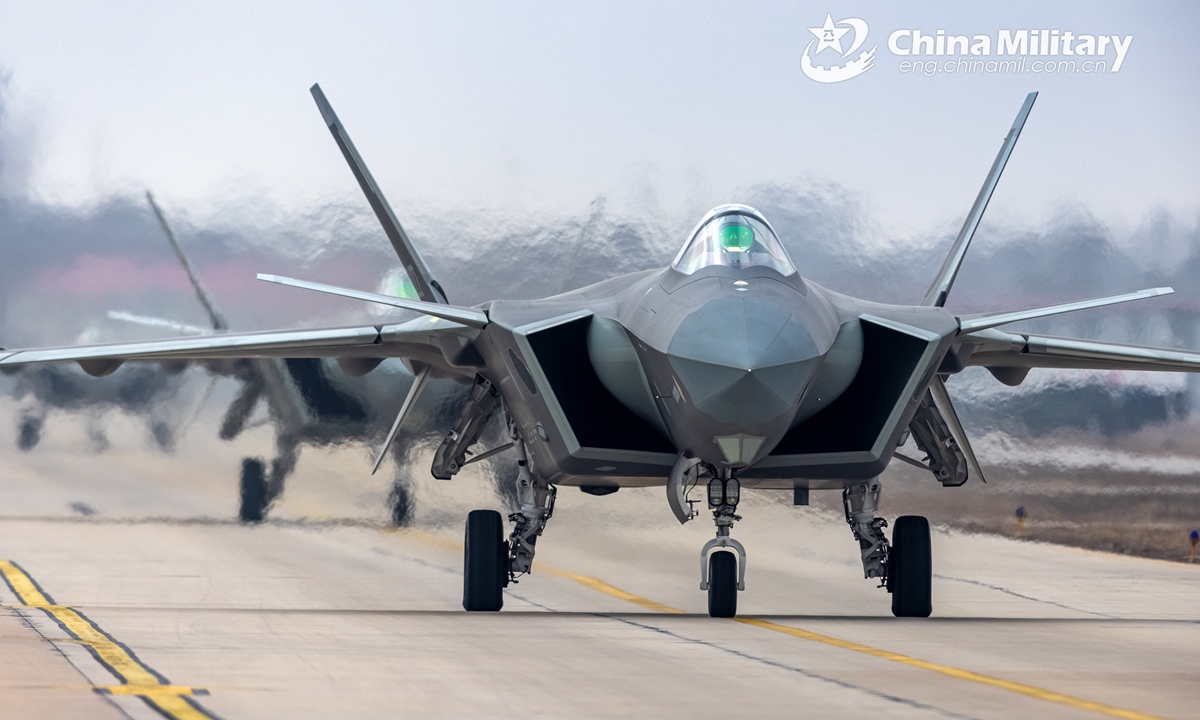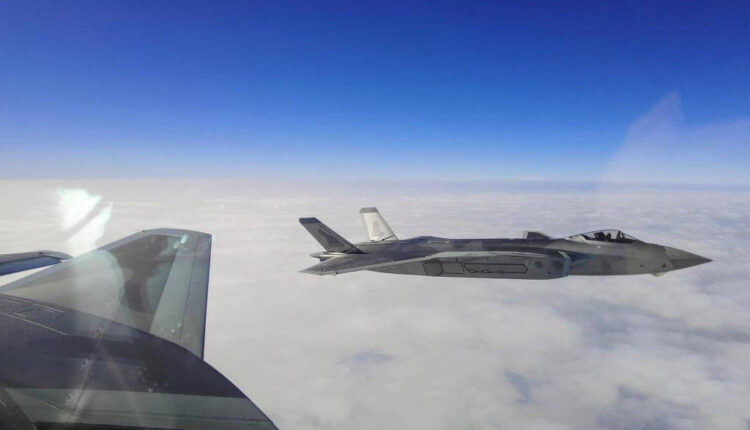China’s J-20 Stealth Fighter Can Now Detect Enemy Jets 3X Farther, Thanks to New Radar Chip
This upgrade has reportedly tripled the radar's detection range, allowing the J-20 to identify aerial targets with greater speed, accuracy, and at far greater distances than ever before.
(DEFENCE SECURITY ASIA) —China has declared a significant advancement in its military radar technology, claiming that its J-20 “Mighty Dragon” stealth fighter can now detect enemy aircraft at three times its previous range, following the integration of domestically developed silicon carbide (SiC) semiconductor components.
The announcement, made via the official social media channel of Shandong University on May 30, credited Professor Xu Xiangang and his team for the groundbreaking achievement.
Xu leads the Institute of Novel Semiconductors at Shandong University and also serves as director of the State Key Laboratory of Crystal Materials, positioning him at the forefront of China’s semiconductor innovation efforts.
According to the university, the new SiC-based chip developed by Xu’s team has enabled a dramatic increase in phased array radar performance, specifically in the KLJ-5 AESA radar system used aboard the J-20 stealth fighter.
This upgrade has reportedly tripled the radar’s detection range, allowing the J-20 to identify aerial targets with greater speed, accuracy, and at far greater distances than ever before.
In addition to enhanced radar range, the SiC chip is said to significantly improve missile guidance accuracy, laser weapon energy output, and the overall resilience of radar systems under combat stress and electronic warfare conditions.
“This ‘Chinese chip’ is crucial for national security,” the university stated in its announcement, describing the semiconductor as a “hardcore shield” for China’s advanced military platforms.

In an accompanying video, Xu acknowledged that the United States had long deployed SiC-based semiconductors in systems such as the F-35 stealth fighter and THAAD missile defence units.
However, he stressed that China’s recent ability to domestically produce high-purity, semi-insulating SiC crystals marks a breakthrough in self-reliance after two decades of lagging behind Western capabilities.
“Twenty years ago, we couldn’t even produce a substrate meeting basic standards,” Xu said. “Now, we can precisely control the material’s growth and quality.”
The J-20, which entered operational service in 2017, has been positioned by Beijing as a core symbol of technological parity with the United States’ F-22 and F-35 fighters.
The KLJ-5 radar, developed by the Nanjing Research Institute of Electronics Technology (NRIET), operates in the X-band frequency and employs solid-state transmit-receive modules capable of tracking multiple air targets simultaneously and guiding long-range weapons.
Open-source assessments had previously placed the KLJ-5’s detection range at approximately 300 kilometers against conventional fighter-sized targets.
With SiC integration, Chinese military analysts now assert that detection ranges could exceed 600 to 700 kilometers, depending on the radar cross-section and altitude of the target.

This would make the J-20 one of the most formidable airborne sensors in any air force inventory worldwide.
The radar enhancement also provides the J-20 with an expanded engagement envelope for its PL-15 long-range air-to-air missile, allowing early lock-on and fire control against adversaries before being detected themselves.
Such capabilities are critical in the Indo-Pacific region, where forward-deployed U.S., Japanese, and allied aircraft routinely patrol highly contested zones like the Taiwan Strait and South China Sea.
Moreover, the KLJ-5’s enhanced signal integrity and thermal endurance mean the radar can function effectively even under aggressive electronic warfare conditions—an increasingly central domain of modern high-end air combat.
The university also highlighted Xu’s role in scaling SiC crystal growth from 2 inches to 12 inches, a technical feat that has enabled volume production of radar-grade chips.
His technologies have been transferred to key Chinese semiconductor firms such as SICC and Summit Crystal Semiconductor, helping to break longstanding foreign monopolies in the field.
Since 2000, Xu’s research has enabled the integration of SiC materials into advanced weapon systems including airborne radar, warship-based sensors, and precision-guided missile platforms.
The timing of the announcement comes amid intensifying U.S.-led restrictions on semiconductor exports to China, particularly for components used in military, aerospace, and artificial intelligence applications.

“When our country cannot source these materials from abroad, we dedicate ourselves to developing them here,” Xu said.
Silicon carbide, first identified in 1891, is prized for its ability to function at extreme temperatures and voltages, making it ideal for high-power electronic applications such as radar, electric vehicles, and next-generation quantum communication.
By integrating SiC-based modules into the J-20’s radar, China has significantly enhanced its ability to conduct long-range detection, tracking, and electronic warfare missions against peer and near-peer adversaries.
With its upgraded radar, the J-20 is evolving beyond stealth and speed, emerging as a high-value networked node capable of sharing data with airborne early warning aircraft like the KJ-500 and stealth drones such as the GJ-11 “Sharp Sword.”
The KLJ-5 SiC upgrade underscores China’s determination to not only match, but potentially outpace, Western fifth-generation airpower in the critical domains of sensor range, electronic survivability, and air dominance.
As the global race for radar supremacy intensifies, the J-20’s new eyes may ultimately define the next era of strategic aerial warfare in the Indo-Pacific and beyond.
China Now Operates Over 250 J-20 “Mighty Dragon” Stealth Fighters, World’s Second-Largest Fifth-Gen Fleet
China’s People’s Liberation Army Air Force (PLAAF) now fields an estimated 250 to 300 J-20 “Mighty Dragon” stealth fighters, solidifying its position as the world’s second-largest operator of fifth-generation combat aircraft after the United States.


